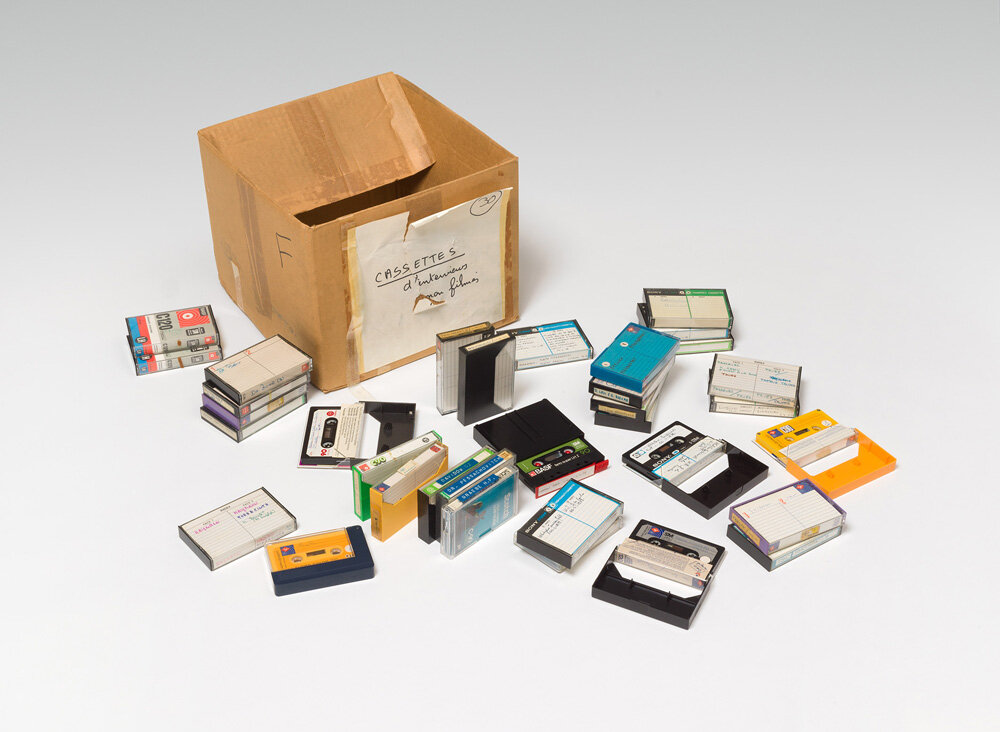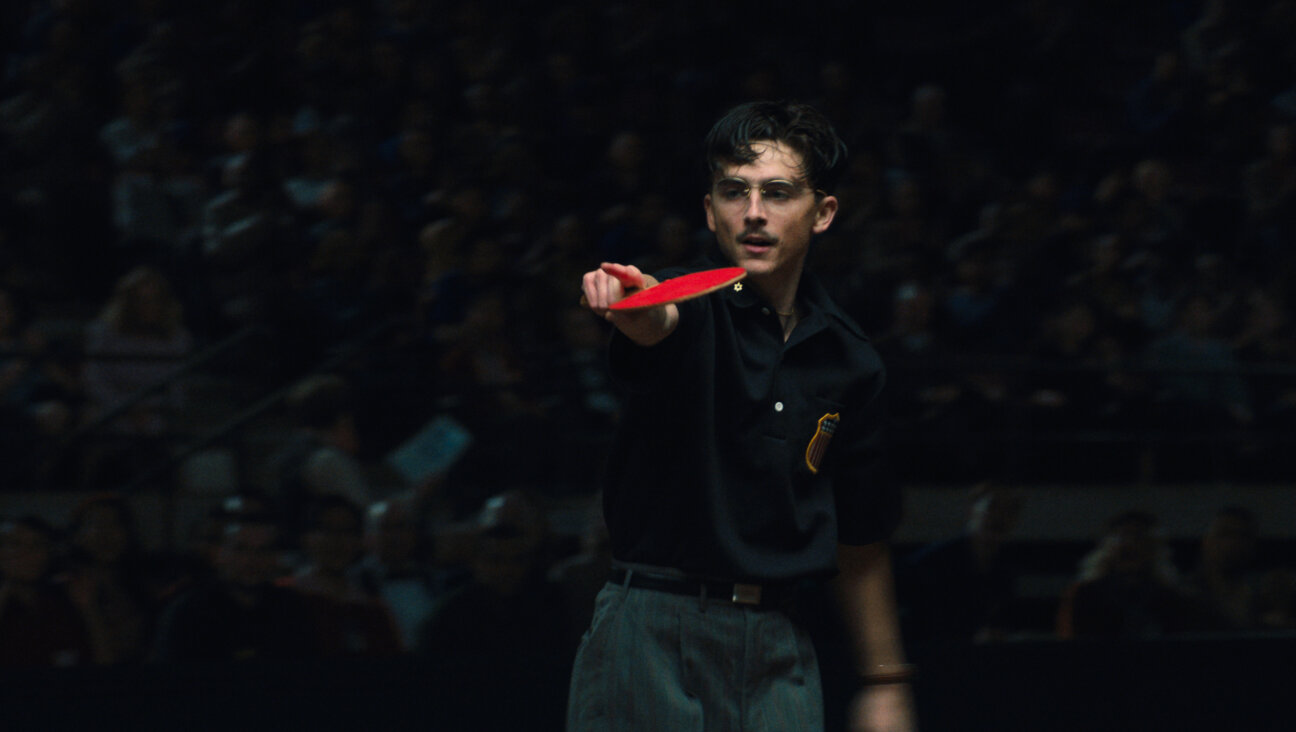Woody Allen’s ‘Manhattan’ Is 40. Can We Still Admire It In 2019?

Woody Allen and Meryl Streep on the set of “Manhattan.” Image by Allan Tannenbaum/Getty Images
When Woody Allen and Soon-Yi Previn began their relationship, she was a 21-year-old college freshman and the adopted daughter of Allen’s longtime partner, Mia Farrow. He was 56 and had already directed “Manhattan.” Their nearly three-decade-long romantic involvement has made the film, which turns 40 on April 25 and involves a love affair between 42-year-old Isaac (Allen) and 17-year-old Tracy (Mariel Hemingway, 16 at the time of filming), nearly impossible to evaluate on its own terms.

Woody Allen and Mariel Hemingway in 2016. Image by Getty/Rob Kim/Stringer
Yet for many years — including the 12 years between the release of “Manhattan” and the start of Allen and Previn’s courtship — it was. Filmmakers would continue to cite it as an influence into the 21st century, and critics well into this decade have ranked it among Allen’s best work. While Allen’s affair with and eventual marriage to Previn has been the subject of public scrutiny since the 1990s, the cultural reckoning of the #MeToo movement, and renewed interest in Dylan Farrow’s 1992 allegation that Allen, her adoptive father, sexually assaulted her, have prompted the most significant groundswell of commentary on the film’s inherent ickiness to date. (Allen vigorously denies and was never charged with Dylan Farrow’s accusations.) For those who view the circumstances of Allen’s marriage to Previn as suspect or even predatory, the film serves as proof of premeditation — and potentially proof of worse.
Revisiting “Manhattan” in 2019 was a kind of critical scab-picking I didn’t look forward to. I anticipated feeling “urpy,” the term Claire Dederer used to describe the sensation of rewatching the film in her 2017 essay “What Do We Do with the Art of Monstrous Men.” Witnessing Allen and Hemingway kissing on a carriage ride through Central Park, or lying in bed, or talking about how they have “great sex,” turns the stomach. (It’s worth noting that in New York, where the film is set, Isaac and Tracy’s relationship would be considered legal. The age of consent in the state was then, as it is now, 17.)
But a few minutes into my screening, I felt fine.
It’s hard as a New Yorker, or as a person with a measurable pulse, to not be lifted by the opening swell of “Rhapsody in Blue” to the film’s black and white shots of the city. It’s just as hard, as someone who has a soft spot for Allen, to not feel some mischievous joy when Isaac inserts himself over Gershwin’s majestic fanfare to narrate one of a series of false starts of his novel: “He adored New York City… he idolized it… he romanticized it all out of proportion.”
Shortly after second guessing those introductions, Isaac’s prose turns comically lofty: New York, he says, is a “metaphor for the decay of contemporary culture” brought on by its residents’ “lack of individual integrity.” That notion is a clue to what the film might have been if it were braver: A morality play about ethical cowards. Of course, it’s not; Isaac quickly follows his musings on the town’s lapsed decency by saying his novel’s protagonist has the “coiled sexual power of a jungle cat” — funny, but not a setup for moral nuance, and certainly not flattering as seen through the lens we tend to apply to the film today.
Isaac is a typical Allen avatar, a nebisshy mouthpiece who worships Ingmar Bergman and makes his living as a TV writer. The character resembled Allen even pre-Previn, so it’s not much of a strain for a contemporary viewer to read autobiography into the film. But something that struck me on this viewing is how “Manhattan” eerily predicts turbulence in Allen’s life that hadn’t yet come to pass — not just his relationship with Previn, but much of the drama that would follow it. Isaac, for instance, is worried about what his ex-wife Jill (Meryl Streep) will say about him in her tell-all book. And indeed, he had cause to fear what Farrow would reveal to a court as grounds for their separation. (He has repeatedly denied the worst of Farrow’s allegations).
Interesting as that subplot is, it’s likely a coincidence. Isaac’s relationship with Tracy, however, suggests real questions about Allen’s psychology. Isaac frequently dismisses Tracy as “just a kid,” or says that their relationship is simply a phase. She often accuses him of not taking her seriously. But Isaac and Tracy never confront the ethical question of their arrangement and neither do those around them. This lack of pushback doesn’t read as a considered choice. It reads like something that Allen never even thought to include.
About halfway through the film, Isaac and Tracy’s relationship is relegated to a subplot as Isaac falls for Mary (Diane Keaton) with whom Isaac’s married friend Yale (Michael Murphy) has been having an affair.
Yale and Mary eventually resume their relationship, and Isaac confronts Yale at the college where he teaches, lecturing his friend about behaving ethically in an extramarital affair. It’s another moment when the film could shift its moral focus to Isaac, whose claim to ethical superiority, after Tracy, should be seen as flimsy. Yet Yale tells Isaac he’s too concerned with behaving morally. And Isaac doubles down, while standing in front of the skeleton of a baboon. “I’m going to be hanging in a classroom someday,” he says, “and when I thin out I want to make sure I’m well thought of.”
Somehow, Allen has managed to frame Isaac as an ethical arbiter. It’s a familiar mode for Allen, and he’s winning in it — so much so that he can make you forget exactly what he’s arguing for. He doesn’t suggest that Yale ought to stay faithful to his wife, but rather that he should stop sneaking around with his mistress so that Isaac himself can see her.
In the film’s final minutes, Isaac realizes he made a mistake in letting Tracy go and runs across town to her building, stopping at payphones along the way. She’s headed out with her luggage, about to fly off to London for college.
This is the film’s moment of truth: Tracy, who is, in many ways more mature than Isaac, might speak sense to him, although one could convincingly argue it’s no 17-year-old’s job to serve as moral guide to the 42-year-old who pursued a barely-legal relationship with her. (Of course, Tracy isn’t ever framed as a victim, one of the film’s moral shortcomings). But while Tracy does reason with Isaac, she does so in a way that appears to legitimize the film’s normalization of their romance. After Isaac, for the first time, insists she’s not a kid, Tracy says she’ll be back in six months and that it’s not that long of a time to wait for her. The film wraps on Isaac’s stunned reaction after Tracy, saying goodbye, tells him to “have a little faith in people.”
One doesn’t need the context of Allen’s relationship with Previn to find fault with “Manhattan.” If anything, the situation of the film is far less ambiguous in its impropriety.
A middle-aged Allen cast himself in a film where he would have love scenes with a then-16-year-old. He scripted and directed it himself, and the film is ultimately disinterested in the ethics of the setup of a relationship between a middle-aged man and an adolescent woman. It doesn’t help Allen’s case, in hindsight, that the film’s first scene begins with Isaac’s friend Yale’s assertion that “the essence of art is to provide a kind of working-through situation, so that you can get in touch with feelings you didn’t know you had.” Was “Manhattan” Allen’s way of “working through” his troubling attraction to much younger women?
There’s a reason that “Manhattan” still has a place in the canon. It’s brimming with iconic shots: Isaac and Mary silhouetted on a bench before the backdrop of the Queensboro Bridge, Isaac and Mary walking across the Hayden Planetarium moonscape. And it has some of Allen’s wittiest lines: See “Your self esteem is like a notch below Kafka’s,” or “I had a mad impulse to throw you down on the lunar surface and commit interstellar perversion with you.” Notice that the best dialogue and most iconic shots come not from sequences involving Tracy, but from those focused on Mary. This may be how the film managed to survive so many decades with hardly a dent to its reception. People remember the good and forget the bad.
Many might be inclined to forget it all. But “Manhattan” can’t be erased from our cultural memory all that easily. “Manhattan” is the reason Noah Baumbach’s “Frances Ha” is in black and white. It was part of what inspired that film’s star and co-writer, Greta Gerwig — a former Woody Allen collaborator who has since spoken out against him — to step behind the camera for her Oscar-nominated film “Lady Bird.” We can’t dispense of ”Manhattan” entirely. But we can take its aesthetic virtues and parlay them to more conscionable, and, hopefully, no less significant works of art.
PJ Grisar is the Forward’s culture intern. He can be reached at [email protected]

















